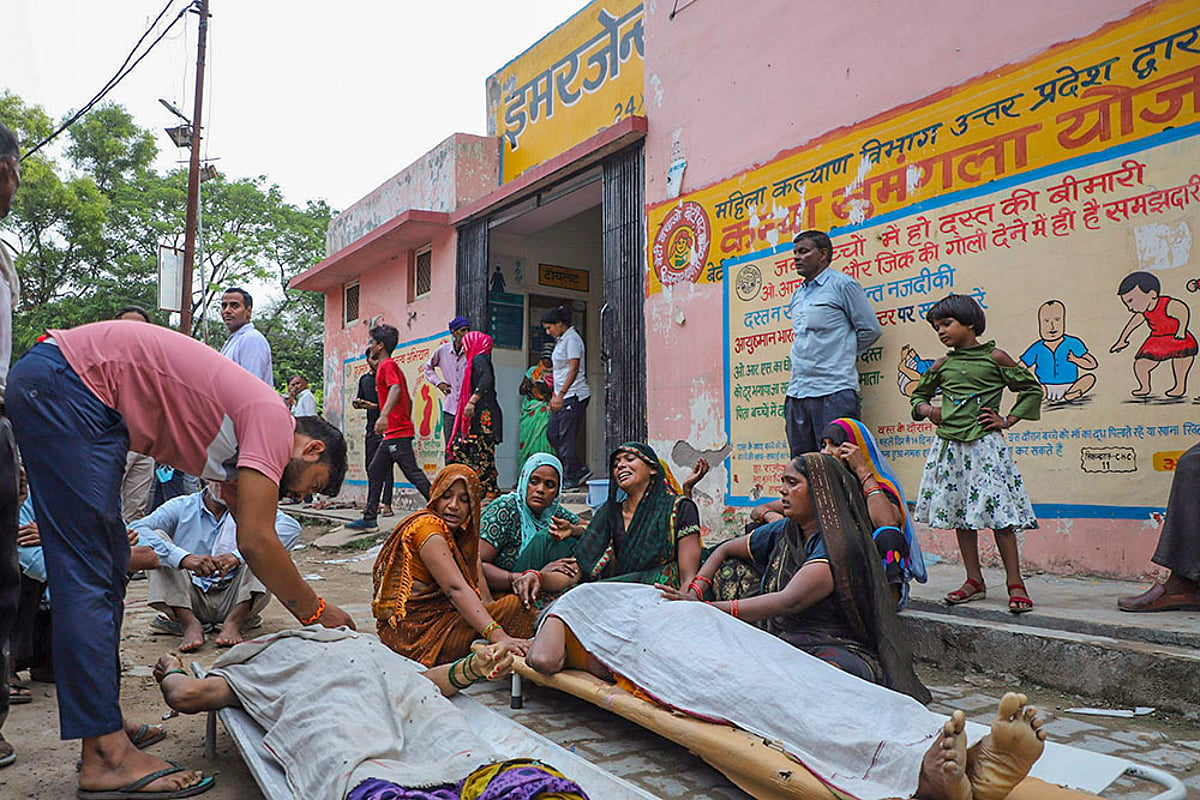
photo credit : outlook
Religious gatherings in India, characterized by massive crowds and fervent devotion, are unfortunately also prone to catastrophic stampedes. Despite numerous incidents over the years, effective crowd management remains a significant challenge, resulting in repeated tragedies. This article explores the systemic failures, government responsibility, and the need for comprehensive reforms to address this critical issue.
The Hathras Stampede: A Recent Tragedy
The recent stampede at a satsang in Hathras, Uttar Pradesh, which resulted in over 120 deaths, is a stark reminder of the dangers associated with poorly managed religious events. Organized by the godman Narayan Sakaar Hari, also known as Bhole Baba, the event turned deadly due to inadequate crowd control measures. The state government, led by Chief Minister Yogi Adityanath, has formed a three-member commission to investigate the incident and explore potential conspiracies. However, the root causes lie in systemic failures and a lack of preparedness.
Historical Precedents: Repeated Failures
Uttar Pradesh, a state with a history of deadly stampedes at religious gatherings, offers several examples of how poor crowd management and official apathy contribute to these tragedies.
2013 Kumbh Mela Stampede: A Predictable Disaster
In 2013, a stampede at the Prayagraj railway station during the Kumbh Mela claimed over 40 lives. Eyewitnesses attributed the chaos to a last-minute change in the platform of a train. The subsequent judicial inquiry, led by retired Allahabad High Court judge Onkareshwar Bhatt, indicted multiple agencies, including the Railways and the local administration. The inquiry highlighted significant lapses in planning and coordination, with 59% of construction work remaining incomplete at the event’s commencement. Despite these findings, the government’s response was largely superficial, failing to implement substantial preventive measures.
2016 Varanasi Stampede: Ignored Warnings
In 2016, a stampede on the Rajghat Ganga Bridge in Varanasi resulted in 25 deaths. Followers of the Jai Gurudev cult were heading to a spiritual camp when the overcrowded bridge became a death trap. The judicial probe, led by Justice Rajmani Chauhan, found that the organizers grossly underestimated the crowd size and failed to inform the police and district administration adequately. Despite criminal charges against the sect leader, Pankaj Maharaj, no meaningful action was taken, reflecting a pattern of neglect and lack of accountability.
2010 Pratapgarh Stampede: Mismanagement and Neglect
The 2010 stampede at the Ram Janki Temple in Pratapgarh killed 63 people and injured over 100. The tragedy was triggered by the collapse of an under-construction gate, causing panic among the gathered devotees. The subsequent inquiry blamed the temple management and the trustees of the Jagadguru Kripalu Bhakti Dhaam Trust for inadequate arrangements and faulty construction. Despite these clear lapses, the government’s response was limited to registering a criminal case without naming any specific individuals, illustrating a lack of accountability.
A Nationwide Problem
The issue of crowd mismanagement at religious gatherings is not limited to Uttar Pradesh. According to a study published in the International Journal of Disaster Risk Reduction, 79% of stampedes in India occur during religious festivals. These events are often held in rural areas with inadequate infrastructure, exacerbating the risks. Another study in Safety Science noted that nearly 70% of crowd accidents in India between 2000 and 2019 were related to religious events, emphasizing the national scale of the problem.
Government Responsibility: The Need for Proactive Measures
The recurring nature of these tragedies points to systemic failures and a lack of proactive measures by the government. While judicial inquiries and action reports are common responses, they often fail to translate into concrete improvements. The absence of stringent regulations, poor enforcement of existing guidelines, and a reactive rather than proactive approach characterize the government’s handling of these events.
Comprehensive Planning and Coordination
To prevent such tragedies, the government must adopt a holistic approach to crowd management at religious gatherings. This includes stringent adherence to safety norms, detailed project planning, and robust coordination between various departments and agencies. The use of technology, such as crowd simulation models and real-time monitoring, can also enhance safety measures.
Accountability and Enforcement
Ensuring accountability is crucial. The government must not only initiate inquiries but also implement their recommendations and take decisive action against those found negligent. This includes holding event organizers responsible for underestimating crowd sizes and failing to inform authorities adequately.
Conclusion
The repeated stampedes at religious gatherings in India highlight a grave issue of crowd mismanagement and government negligence. While spirituality and religious fervor are integral to the country’s cultural fabric, they should not come at the cost of human lives. It is imperative for the government to take a proactive stance, enforce stringent safety measures, and ensure accountability to prevent such tragedies in the future.
